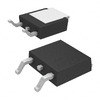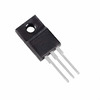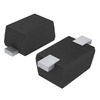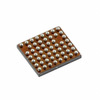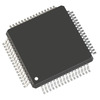All About the TIP122 Transistor: Datasheet, Dimensions, and Circuit Uses
The TIP122 is a versatile NPN Darlington power transistor, widely recognized for its robust performance and reliability in diverse electronics applications. Engineered to handle up to 60V and 8A peak currents, the TIP122 excels in challenging tasks like motor control, power amplification, and switching circuits. Its high current gain and ability to withstand demanding environments make it ideal for industrial automation, where consistent and efficient power distribution is dangerous. This article digs into TIP122’s specifications, actual applications, and best practices for achieving optimal performance, offering a comprehensive guide for you.Catalog

TIP122 Overview
The TIP122 is crafted as a silicon NPN Darlington power transistor housed within a TO-220 package, employing advanced planar technology and a monolithic Darlington configuration. This intricate design permits the transistor to proficiently handle voltages up to 60 volts, accommodating a peak current of 8 amperes and a continuous current of 5 amperes. These characteristics render the TIP122 exceptionally well-suited for controlling high-power functions, encompassing not only motors but also solenoids and LEDs.
The TIP122 is distinguished by its substantial current gain, a result of its Darlington pairing. This attribute significantly elevates its current capacity, ensuring smooth functioning in circuits that demand heightened amplification. You can frequently recognize such traits as basic in scenarios emphasizing high efficiency and dependability. While motors, solenoids, and LEDs are typical companions, the transistor's versatility traverses other dominions. Its remarkable thermal stability and its mechanisms for shielding against overcurrent extend its usage into industrial automation systems, driving circuits, and power management frameworks.
Embracing TIP122 in authentic applications often calls for a profound comprehension of power dissipation and thermal dynamics. Pairing the transistor with fitting heat sinks is a prevalent tactic, ensuring operational effectiveness without breaching thermal limitations. These practices emphasize the significance of elaborate design contemplation in electronic undertakings.
Pinout
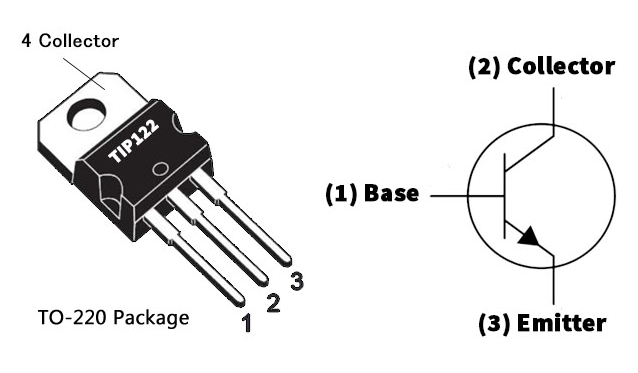
CAD Design
Symbol

Footprint

3D Visualization
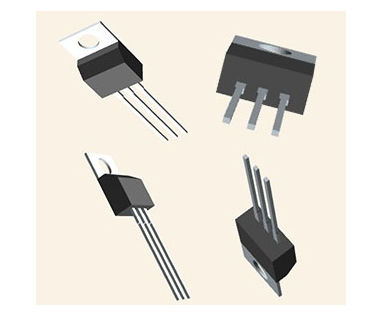
Internal Schematic Diagram
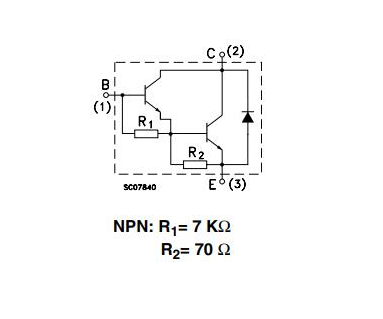
Characteristics
|
Feature |
Specification |
|
Package Type |
TO-220 |
|
Transistor Type |
NPN |
|
Base Current (IB) |
120 mA |
|
Continuous Collector Current (IC) |
5:00 AM |
|
Collector-Emitter Voltage (VCE) |
100 V |
|
Collector-Base Voltage (VCB) |
100 V |
|
Emitter-Base Voltage (VEBO) |
5 V |
|
Collector Dissipation (Pc) |
65 W |
|
DC Current Gain (hFE) |
1000 |
|
Storage & Operating Temperature |
-65 to +150 °C |
Advantages
The TIP122 transistor provides a myriad of appealing features that surpass conventional expectations, positioning it as a favored choice across various applications. By digging into these characteristics, you can tap into their full potential, mostly in sophisticated circuits where high efficiency and dependability are dominant.
Low Saturation Voltage
A notable feature of the TIP122 is its minimal saturation voltage. This trait allows the transistor to function with reduced power loss, thereby extending the device's service life in which it is integrated. In practical settings, this results in diminished heat generation and elevated circuit efficiency. You can often have a favorable view of this attribute, especially when engaged in energy-conscious designs.
Simple Drive Requirements
The uncomplicated drive requirements of the TIP122 facilitate its integration into various systems. This simplicity accelerates the design process and mitigates error risks. In practical scenarios, this ease leads to swifter deployments and reduced troubleshooting, thereby enhancing overall productivity.
Wide Safe Operating Area
The TIP122 exhibits an extensive safe operating area, ensuring stable performance even amidst changing conditions. This reliability proves advantageous in environments like outdoor electronics or high-demand industrial systems where fluctuations may occur. The capacity to consistently deliver functionality provides reassurance in serious applications.
Low Distortion Complementary Designs Efficiency
The TIP122 is mostly effective in low-distortion complementary designs due to its well-balanced characteristics. Its application in audio amplifiers, for instance, results in clearer sound output by minimizing distortion. This tangible improvement in audio quality renders it an attractive component for you seeking excellent performance.
Portability and Ease of Use
Apart from its electrical characteristics, the design of the TIP122 aids in convenient handling and transport. This is especially advantageous in large-scale manufacturing or field repairs, where mobility and rapid replacement are a must. This practical feature highlights its versatility in different operational settings.
Technical Specification
|
Type |
Parameter |
|
Lifecycle Status |
ACTIVE (Last Updated: 7 months ago) |
|
Factory Lead Time |
8 Weeks |
|
Contact Plating |
Tin |
|
Mount |
Through Hole |
|
Mounting Type |
Through Hole |
|
Package / Case |
TO-220-3 |
|
Number of Pins |
3 |
|
Weight |
6.000006g |
|
Transistor Element Material |
SILICON |
|
Collector-Emitter Breakdown Voltage |
100V |
|
Number of Elements |
1 |
|
hFEMin |
1000 |
|
Operating Temperature |
150°C TJ |
|
Packaging |
Tube |
|
JESD-609 Code |
e3 |
|
Part Status |
Active |
|
Moisture Sensitivity Level (MSL) |
1 (Unlimited) |
|
Number of Terminations |
3 |
|
ECCN Code |
EAR99 |
|
Voltage - Rated DC |
100V |
|
Max Power Dissipation |
65W |
|
Current Rating |
5A |
|
Base Part Number |
TIP122 |
|
Pin Count |
3 |
|
Polarity |
NPN |
|
Element Configuration |
Single |
|
Power Dissipation |
2W |
|
Transistor Application |
SWITCHING |
|
Transistor Type |
NPN - Darlington |
|
Collector Emitter Voltage (VCEO) |
100V |
|
Max Collector Current |
5A |
|
DC Current Gain (hFE) (Min) @ Ic, Vce |
1000 @ 3A 3V |
|
Current - Collector Cutoff (Max) |
500μA |
|
JEDEC-95 Code |
TO-220AB |
|
Vce Saturation (Max) @ Ib, Ic |
4V @ 20mA, 5A |
|
Collector Base Voltage (VCBO) |
100V |
|
Emitter Base Voltage (VEBO) |
5V |
|
Max Junction Temperature (Tj) |
150°C |
|
VCEsat-Max |
4V |
|
Height |
19.68mm |
|
Length |
10.4mm |
|
Width |
4.6mm |
|
REACH SVHC |
No SVHC |
|
Radiation Hardening |
No |
|
RoHS Status |
ROHS3 Compliant |
|
Lead Free |
Lead Free |
Alternatives
|
Part Number |
Description |
Manufacturer |
|
TIP122 |
Low voltage NPN power Darlington transistor |
STMicroelectronics |
|
TIP122-S |
Power Bipolar Transistor, 5A (IC), 100V V(BR)CEO,
1-Element, NPN, Silicon, TO-220AB, Plastic/Epoxy, 3 Pin, TO-220, 3 PIN |
Bourns Inc |
|
TIP122-BP |
Power Bipolar Transistor, 5A (IC), 100V V(BR)CEO,
1-Element, NPN, Silicon, TO-220AB, Plastic/Epoxy, 3 Pin, ROHS COMPLIANT,
PLASTIC, TO-220, 3 PIN |
Micro Commercial Components |
|
TIP122TU |
Power Bipolar Transistor, 5A (IC), 100V V(BR)CEO,
1-Element, NPN, Silicon, TO-220AB, Plastic/Epoxy, 3 Pin, TO-220, 3 PIN |
Fairchild Semiconductor Corporation |
|
TIP122G |
5.0 A, 100 V NPN Darlington Bipolar Power Transistor,
TO-220 3 LEAD STANDARD, 50-TUBE |
ON Semiconductor |
Equivalents
When considering these alternatives, it is prudent to carefully check the pin configurations, as they may differ from those of the TIP122.
• TIP132
• TIP102
• TE261
• NTE263
• 2N6045
• 2SD2495
• BDT65B
• 2N6532
• BDT63B
• BDW43
• TIP142T
Complementary PNP Transistor for TIP122
• TIP127
Transistors in the TIP122 Series
NPN Type
• TIP120
• TIP121
• TIP122
PNP Type
• TIP125
• TIP126
• TIP127
Integrating the TIP122 Transistor into Electronic Designs
The TIP122 transistor, notable for its accessible 5V emitter-base voltage and 120mA base current specifications, is highly regarded in applications requiring high collector current and amplification. It finds frequent use in settings such as driving a 48V motor with a continuous 3A current, where the transistor's capability to handle up to a 5A continuous collector current becomes mostly advantageous. A 100-ohm resistor is employed to maintain a steady base current of 42mA, though adjustments can be made to suit different circuit requirements, showcasing the adaptability of transistor-based designs to diverse electrical needs.
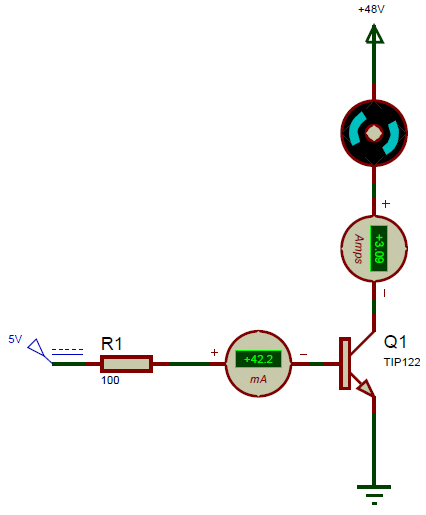
The ability of the TIP122 to manage up to 8A peak current calls for careful consideration of the load characteristics, ensuring motor consumption stays within manageable boundaries. Designing circuits with this transistor involves a thoughtful assessment of both continuous and peak current capacities. You can recognize the benefits of exhaustive testing under simulated load conditions, which helps to prevent exceeding this sensitive limit.
Applications
Versatile Applications in Electronics
The TIP122 is recognized for its adaptability in multiple electronic environments. It serves a variety of purposes such as driving audio amplifiers and managing devices with switching loads below 5A. Its flexibility is evident as it addresses medium power switching needs, adjusting operational dynamics efficiently in different electronic systems. You can appreciate its reliable performance, frequently mentioning how it meets diverse requirements with robustness.
Motor Control Utilization
The TIP122's influence extends significantly to motor speed control. You can deploy it within motor systems to balance speed and torque efficiently—a feature that enhances projects from major industrial machinery to smaller endeavors. You can suggest that fine-tuning the TIP122 allows motors to run more smoothly and efficiently, resulting in noticeable improvements in cost-effectiveness and performance.
Role in Inverter Circuits
Including the TIP122 in inverter circuits exemplifies its ability to manage intricate power shifts. This capability supports sustainable energy initiatives by ensuring dependable inverter operations. You can consistently emphasize its role in boosting inverter reliability and effectiveness, pointing out tangible successes in actual scenarios.
Medium Power Switching
The TIP122 effortlessly performs in the world of medium power switching, often being employed in numerous power management scenarios. It bridges the operational divide between low-power and high-power switches. You can frequently commend its steady switching performance, emphasizing its active role in facilitating smooth device operations across diverse load conditions.
Circuit Employing TIP122
100-Watt Audio Amplifier Design

This sophisticated audio amplifier setup features the TIP122 and TIP127 Darlington transistors, which play a key role in enhancing audio signals. These components are renowned for their impressive current amplification capacities, making them suitable for high-power audio setups. The circuit takes its audio input from a microphone, which then navigates through a 470uF coupling capacitor. Far from just blocking DC components, this capacitor is used in maintaining the purity of the audio signal, ensuring clarity and fidelity across different amplification stages.
Initially, the audio signal enters the circuit at transistor Q1. This initial amplification phase is designed to adequately boost the incoming signal, preparing it for further amplification by transistor Q2. Each stage has been thoughtfully engineered to sustain stability and manage distortion effectively, a focus sharpened by experiences in actual applications where these factors profoundly impact the overall auditory experience.
The final stage delivers power to a speaker, relying on a unique current path with refinements made possible by a 10K preset potentiometer. This component allows for precise adjustments, enabling you to achieve the preferred volume levels. The practice has shown that such precision in adjustability offers notable control in diverse soundscapes, greatly enhancing enjoyment. Feedback mechanisms are also embraced to reduce potential challenges like oscillations, utilizing standard practices in audio engineering aimed at preserving audio quality and the longevity of the system.
Package
Package Outline
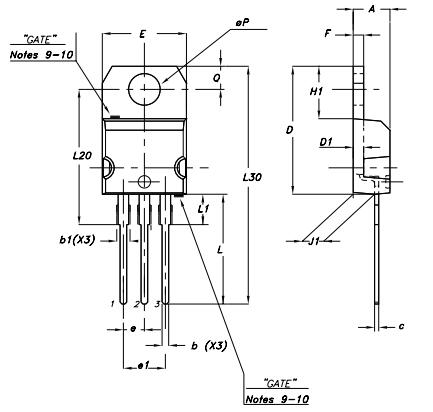
Mechanical Specifications
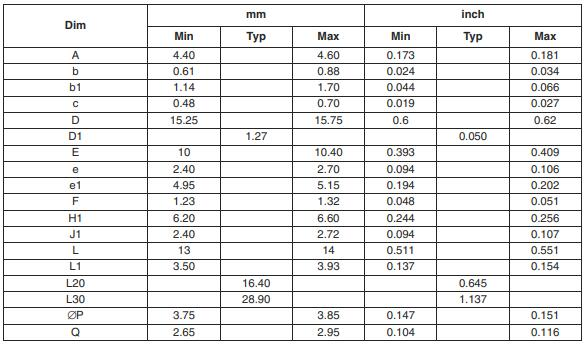
Manufacturer Background
STMicroelectronics stands at the forefront of semiconductor technology innovation, offering solutions that span a vast range of microelectronics applications. Their expertise in System-on-Chip (SoC) technology represents an exquisite balance of complex silicon integration with extraordinary manufacturing capabilities. This fusion has fueled the ascendancy of contemporary technological trends, crafting an ecosystem where versatility and efficiency thrive in harmony.
The emergence of System-on-Chip technology heralds a major shift in the world of microelectronics. By integrating all basic elements of a computer or system into a singular chip, SoC provides numerous advantages, such as lower power consumption, simplified system complexity, and enhanced performance speed. These characteristics hold particular value for sectors focused on mobile devices and embedded systems, where compact design and high efficiency are dominant.
Datasheet PDF
TIP122 Datasheets:
TIP122G Datasheets:
About us
ALLELCO LIMITED
Read more
Quick inquiry
Please send an inquiry, we will respond immediately.
Frequently Asked Questions [FAQ]
1. What is TIP122 transistor?
The TIP122 is an NPN Darlington pair transistor, playing a key role in high-power scenarios thanks to its impressive current management. It can endure up to 100V across the collector-emitter and handle currents up to 5A, offering a substantial current gain of 1000. This capability makes it proficient in powering heavy loads. Acting as dual transistors within a single package, it elevates performance in diverse electronic circuits prioritizing power efficiency. It finds its usage in settings demanding enduring reliability and sustained performance.
2. What does a transistor do?
Transistors stand as the building blocks of modern electronics, used for signal amplification or power switching. They feature three basic terminals that interact with other circuit elements, facilitating fine electronic control and precision. By adjusting the terminal connections, transistors enable complex logic operations active to both analog and digital circuits. Optimal performance of broader electronic systems often calls for astute tuning of transistor parameters.
3. How do you test if TIP122 is working?
Evaluating whether a TIP122 is operational entails a methodical multimeter approach. Connect the positive lead to the BASE and the negative to the EMITTER, noting the voltage drop. A reading from 0.45V to 0.9V indicates proper functioning. This test not only verifies the transistor’s health but also affirms the continuity for dependable circuit operations, thus aiding in minimizing application interruptions.
4. How to safely long-run TIP122 in a circuit?
The longevity and optimal performance of the TIP122 depend on the observance of its maximum rating limits. To prevent device strain, maintain voltage under 100V and restrict current draw to 5A. Sustaining appropriate base current and implementing effective heat dissipation techniques, like heat sinks or cooling systems, are authoritative. Keep storage temperatures between -65°C and +150°C to preserve its structural soundness. These practices are active in areas that demand consistent reliability and durability.
5. Why do we use the Darlington pair?
Darlington pairs, such as the configuration featured in TIP122 transistors, offer a substantial boost in current gain and increase input impedance. This feature makes them attractive over single-transistor models, mostly where signal robustness and power efficiency are of the essence. Their high gain and impedance amplify sensitivity and conserve energy, outperforming in high-voltage or high-current settings where precise management and efficiency are sought.

HC-06 Bluetooth Module: Applications, Arduino Connection, and Specifications
on November 12th
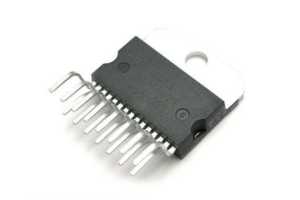
Understanding the TDA7294 DMOS Audio Amplifier: Pinout, Datasheet, and Power Specs
on November 12th
Popular Posts
-

What is GND in the circuit?
on January 1th 3160
-

RJ-45 Connector Guide: RJ-45 Connector Color Codes, Wiring Schemes, R-J45 Applications, RJ-45 Datasheets
on January 1th 2728
-

Understanding Power Supply Voltages in Electronics VCC, VDD, VEE, VSS, and GND
on November 17th 2340
-

Fiber Connector Types: SC Vs LC And LC Vs MTP
on January 1th 2207
-

Comparison Between DB9 and RS232
on January 1th 1826
-

What Is An LR44 Battery?
Electricity, that ubiquitous force, quietly permeates every aspect of our daily lives, from trivial gadgets to life-threatening medical equipment, it plays a silent role. However, truly grasping this energy, especially how to store and efficiently output it, is no easy task. It is against this background that this article will focus on a type of coin cell battery that may seem insignificant on the...on January 1th 1797
-

Understanding the Fundamentals:Inductance Resistance, andCapacitance
In the intricate dance of electrical engineering, a trio of fundamental elements takes center stage: inductance, resistance, and capacitance. Each bears unique traits that dictate the dynamic rhythms of electronic circuits. Here, we embark on a journey to decipher the complexities of these components, to uncover their distinct roles and practical uses within the vast electrical orchestra. Inductan...on January 1th 1753
-

CR2430 Battery Comprehensive Guide: Specifications, Applications and Comparison to CR2032 Batteries
What is CR2430 battery ?Benefits of CR2430 BatteriesNormCR2430 Battery ApplicationsCR2430 EquivalentCR2430 VS CR2032Battery CR2430 SizeWhat to look for when buying the CR2430 and equivalentsData Sheet PDFFrequently Asked Questions Batteries are the heart of small electronic devices. Among the many types available, coin cells play a crucial role, commonly found in calculators, remote controls, and ...on January 1th 1718
-

What Is RF and Why Do We Use It?
Radio Frequency (RF) technology is a key part of modern wireless communication, enabling data transmission over long distances without physical connections. This article delves into the basics of RF, explaining how electromagnetic radiation (EMR) makes RF communication possible. We will explore the principles of EMR, the creation and control of RF signals, and their wide-ranging uses. The article ...on January 1th 1709
-

Comprehensive guide to hFE in transistors
Transistors are crucial components in modern electronic devices, enabling signal amplification and control. This article delves into the knowledge surrounding hFE, including how to select a transistor's hFE value, how to find hFE, and the gain of different types of transistors. Through our exploration of hFE, we gain a deeper understanding of how transistors work and their role in electronic circu...on November 17th 1677


